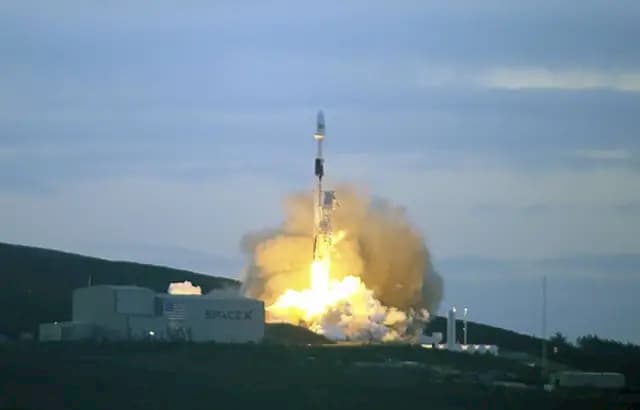SpaceX Launches the First 60 Satellites of its Starlink Constellation

SPACE: With its future constellation “Starlink”, Elon Musk wants to provide internet to the entire planet from space
The California space company SpaceX has planned to launch this Thursday the first 60 satellites of its future constellation “Starlink” , intended to provide internet to the entire planet from space, and that could one day count 12,000 satellites.
The Falcon 9 rocket of the company created by Elon Musk is due to take off from Cape Canaveral in Florida at 22:30 (2:30 GMT this Friday), with at its summit a cap completely filled by the 60 satellites. The launch was originally scheduled for Wednesday night but was postponed due to winds.
All systems and weather are go ahead of tonight’s launch of Starlink; webcast will go live about 15 minutes before liftoff → https://t.co/gtC39uBC7z pic.twitter.com/efdD0y6QGL
— SpaceX (@SpaceX) 16 May 2019
SpaceX, the market leader in launches, wants to seize a part of the future space internet market, which many rivals envy, like the start-up OneWeb, or the giant Amazon, which is much less advanced (project Kuiper ).
Elon Musk hopes to eventually earn 3 to 5% of the global internet market, a share he assessed this Wednesday, in a conference call with the press, to 30 billion dollars a year, ten times more than he wins with his pitchers. The goal: to finance the development of its rockets and spaceships. The boss’s dream is to colonize Mars .
Replace satellites regularly
Each Starlink satellite weighs only 227 kilograms and was manufactured in-house in Redmond, near Seattle.
First 60 @SpaceX Starlink satellites loaded into Falcon fairing. Tight fit. pic.twitter.com/gZq8gHg9uK
— Elon Musk (@elonmusk) 12 May 2019
The second stage of the rocket will begin to release them one hour after the launch at 440 km altitude, then they will propel each to a relatively low orbit, 550 km altitude, above the International space station (about 400 km) but well below most other satellites in Earth orbit, including those in geostationary orbit at 36,000 km.
The interest of being so low is that the response time of satellites will be very low for ground users, since the distance will be small. The disadvantage is that it takes a lot of satellites to mesh the globe, and they “fall back” faster in the atmosphere, after a few years. SpaceX will have to replace them regularly.
This has become possible recently with the rapid decline in the cost of manufacturing satellites and the development of mini-satellites.
A dozen upcoming launches
SpaceX has obtained permission from the US authorities to launch 12,000 satellites , distributed over several orbits, but Elon Musk said Wednesday that a thousand would be enough to make the system “economically viable. The boss said that the system would begin to be really operational with about 800 satellites, which would require a dozen more launches.
“I think that in a year and a half or two, SpaceX will probably have more satellites in orbit than all other satellites,” said Elon Musk. There are today about 2,100 active satellites in Earth orbit (thousands more remain in orbit but are no longer operational)
To receive SpaceX’s internet, a dish antenna the size of an “average pizza box” will be needed, according to him. The company will likely partner with telecom operators, but has not yet started prospecting for customers, he said.
Finally, to minimize the risk of collision between satellites, each element of the constellation incorporates an anti-collision technology, according to SpaceX. The satellites will be designed to fall back and burn 95% in the atmosphere after a few years. The rest will fall in the Pacific.
Enjoyed this? Get the week’s top France stories
One email every Sunday. Unsubscribe anytime.


